Know the market value of your used bike
KMs Run
Motorcycle frame technology has come along way over the years and the basic idea of motorcycle designers was to provide much needed strength while weighing as light as possible. A motorcycle frame acts as a skeleton, just like that of a human being, to which various components of the bike that help run the machine are attached.
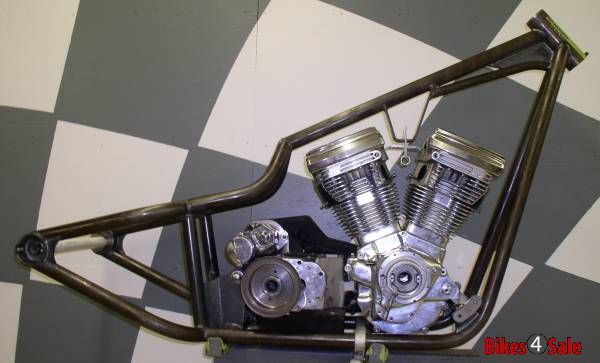
The frame is that element of the bike that deserves the highest importance since it is the base or the foundation of it. Without proper design and engineering precision implemented prior to the manufacturing of the frame, it can result in a total failure of the bike.
Some of the motorcycle frames that are in use are listed below.
Single Cradle Frame
The single cradle frame is similar to that of the bicycle frame. Clearly, this frame was used on motorcycles of the bygone era. In this particular frame, the engine is supported by or mounted on to steel tubes of varying diameters above and below. It's similar to how one would mount an engine on to a bicycle. Honda used this frame on their CG125 commuter bike back in the 80's. It finds limited use at present.
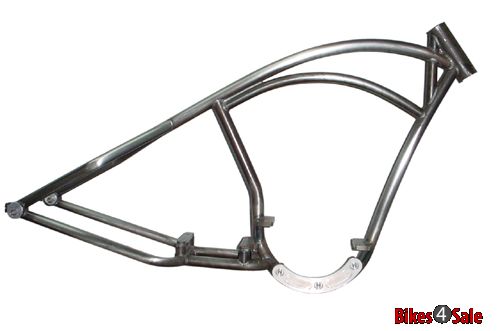
Double Cradle Frame
Evolved from the single cradle frame, the double cradle uses two metal tubes on either side to hold/support the engine. It finds use on most road bikes and custom bikes but lags behind when compared to the latest frames developed, in terms of weight and strength.
Example: Royal Enfield Continental GT.
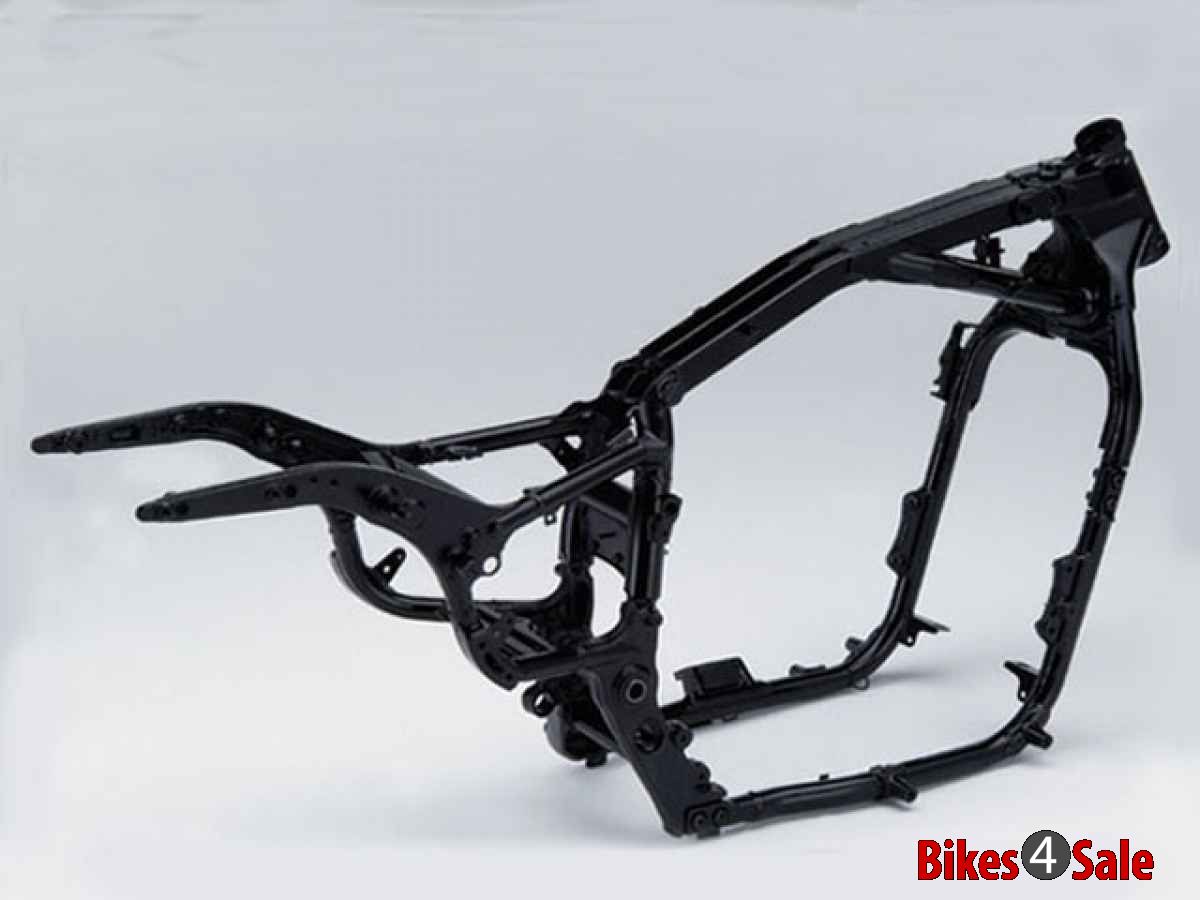
Backbone Frame
As the name suggests, the backbone acts like a spine to which the engine is attached. To put it precisely, the engine is hung from the backbone and keeps it rigid by using mounting along the spine's entire length. Although it might be better looking as it involves lesser frame elements, it drops out on strength and rigidity when compared to other frames.
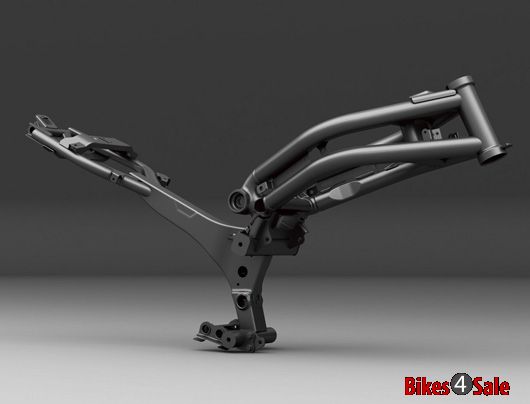
Perimeter Frame
The Perimeter frame was first introduced on racing motorcycles. Once the benefits were realized on using such a frame, it was gradually introduced to normal, road-going bikes. Here, the engine is attached on to two beams that passes around the entire engine head and the beams converge to join the steering head up front and the rear swing arm at the rear. However, this design employs the shortest possible distance while covering the entire area to minimize stresses and maximize rigidity. Pressed steel was initially used to make the beams, although, later on, aluminium came into play and gave manufacturers the advantage of higher rigidity while being light.
Example: Bajaj Pulsar 200NS, Yamaha R15.
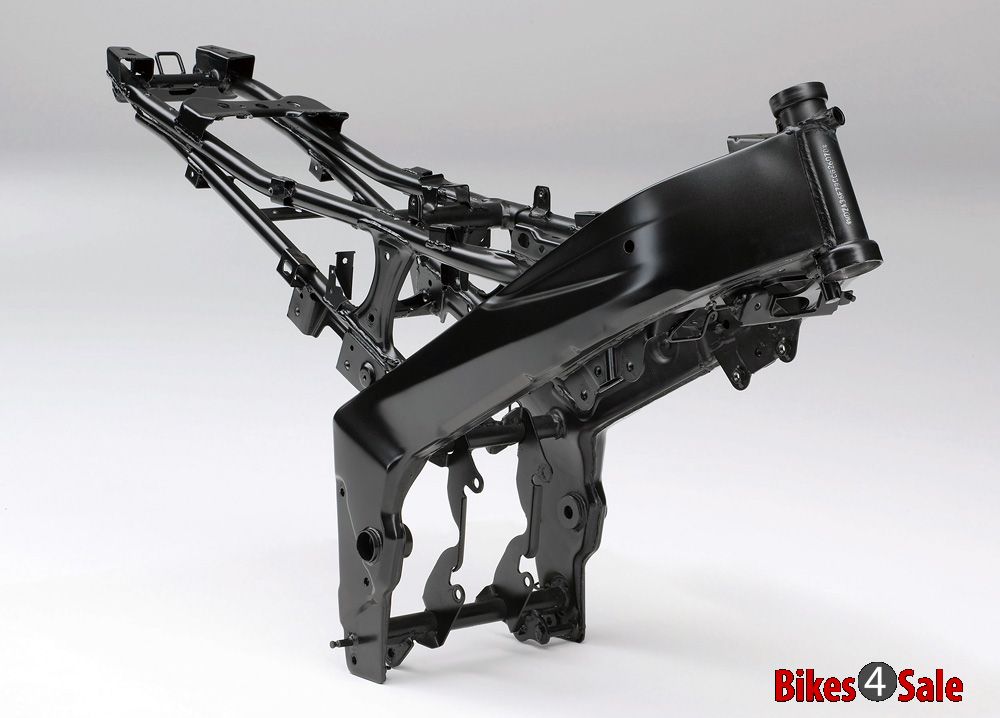
Monocoque Frame
The monocoue structure is a highly rigid structure that combines all elements of the bike that includes: seat mounts, fuel tank and tail; and comes under a single rigid piece of metal. They undergo high level of engineering precision and manufacturing them involves expensive machinery and exotic materials. As a result, they rarely make it to a normal road bike. This frame finds its use out on the race track as much of the racing teams opt for high rigidity as well as low weight and simple structure.
Example: Kawasaki ZX-14.
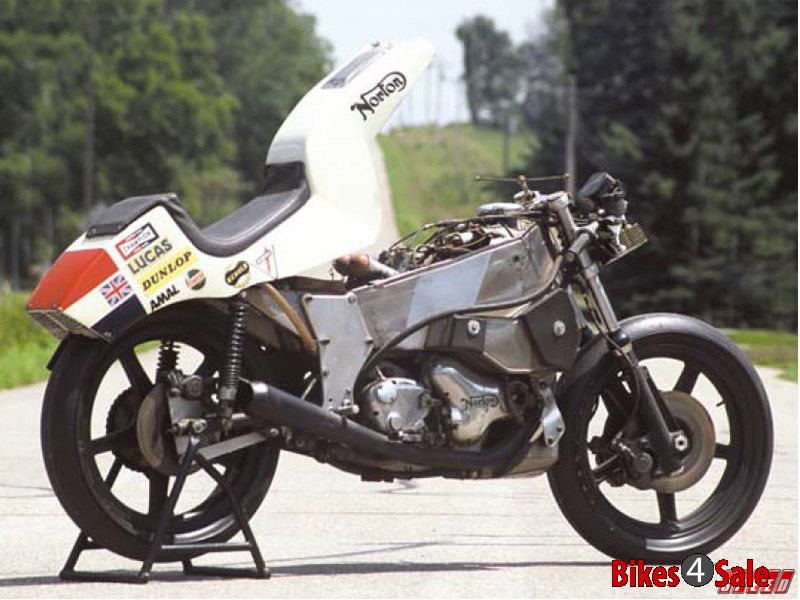
Trellis Frame
The trellis frame is similar in principle to a perimeter frame. The supporting elements circle around the engine and connect to the steering head and rear swing arm using the shortest distance possible. However, in the case of the trellis frame, the elements/tubes are arranged using the lattice girder scheme and this ensures a structure to be strong, rigid and lightweight. When compared to the Perimeter frame, the Trellis frame fares better in terms of rigidity and weight. It is easier to manufacture and also gives extra strength. Such frames find use on more of the aggressive sport bikes but surprisingly. does not compromise on handling. The frame enables the bike to be more agile.
Example: KTM Duke 200, Ducati Monster.
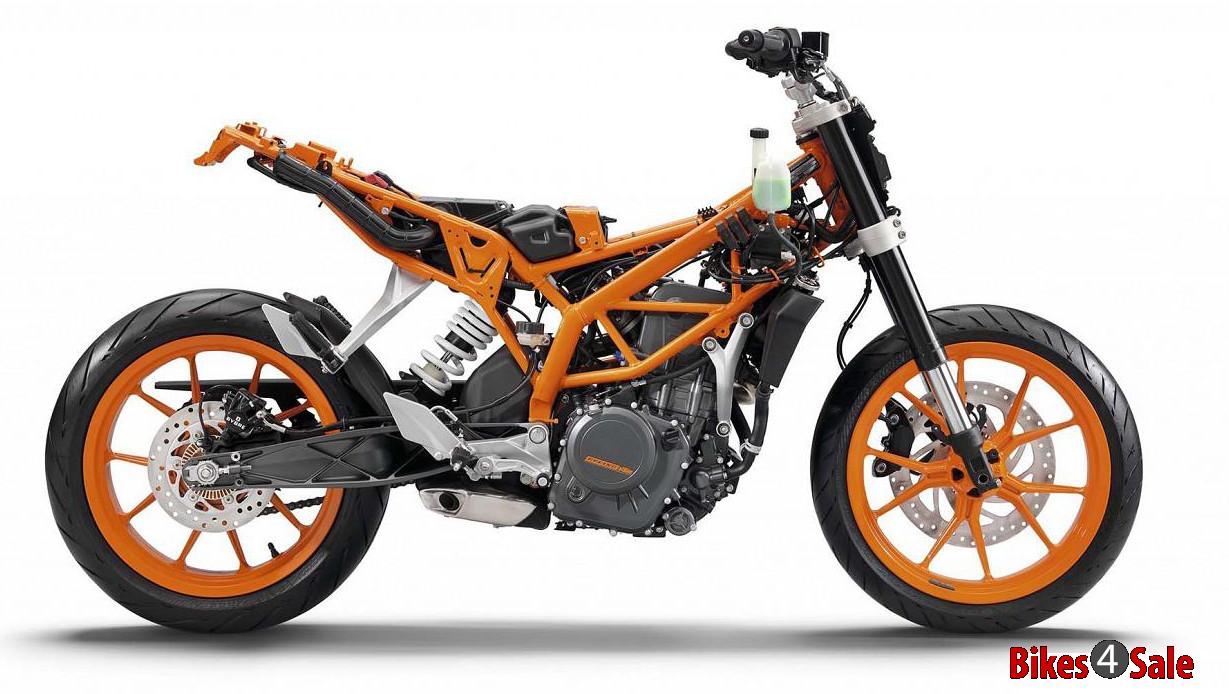
The task of designing a frame does not end with creating a design that is aesthetically safe and structurally stable. The usage of the right material for the frame is essential while designing any structure.
Steel: The most commonly used metal in almost any manufacturing industry. Steel, for a long time, has been proven to withstand large amount of loads acting on it and can change its core properties by adding other elements during its production. It is inexpensive, easy to weld and is durable. It found use on motorbikes for a very long time and is still being used to design motorcycle frames. Examples: Vintage: Norton Featherbed Frame, Honda, Ducati etc
Aluminium: Another element that is used widely and even in day-to-day lives. Aluminium is cheap, it's cheap, it is light but strong and lasts quite a long time. Since aluminium offers a better weight-to-rigidity ratio, aluminium is preferred nowadays over steel even though steel offers better strength.
Carbon Fibre: Tracing its way back to the 1870's, Thomas Alva Edison was the first to work on this extraordinary material. Its main properties were only realized by the 1960's and was first used on Rolls Royce aircraft. Later, the Japanese started using this material to produce some of their products in aerospace and sports equipment, Mitsubishi being one. Carbon fibre acts as a reinforcing material, its structural properties are far better than that of metals and is also resistant to heat. However, carbon fibre is really expensive to manufacture and since it acts as the main element in high-end motorcycles and cars, it evidently acts as a catalyst in pricing.
Titanium: Another exotic metal that found use as a highly resistant metal, resistant to high temperature, large tensile strength, low density and is ductile. Its main advantage is the high strength-to-weight ratio that enables it as a material that finds use in aerospace, automotive and marine industry. Not many motorcycles employ Titanium on their frames due to its high cost and the difficulty to add welds.
Magnesium: A lightweight metal that is rarely found on most road-going bikes. It finds use mostly on race-specific bikes that need to shed a lot of its weight and also emphasize on strength and rigidity.
Go back to Motorcycle Knowledge Base
Get the best price for your old bike. Sell your bike at the Largest Used Bike Market.
